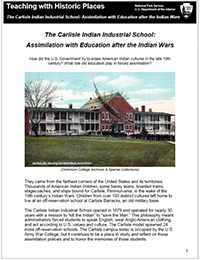
(Featured illustration courtesy NARA via Dickinson College)
Contents
| Introduction
| Where it Fits Into the Curriculum (Objectives and Standards)
| Materials in the Lesson (Readings, Maps, Visual Evidence)
| Post-Lesson Activities
| More Resources
| About
How did the US Government try to erase American Indian cultures in the late 19th century? What role did education play in forced assimilation?
They came from the farthest corners of the United States and its territories: Tens of thousands of American Indian children, some barely teens, boarded trains, stagecoaches, and ships bound for Carlisle, Pennsylvania, in the wake of the 19th century's Indian Wars. Children from over 100 distinct cultures left home to live at an off-reservation school at Carlisle Barracks, an old military base.
The Carlisle Indian Industrial School opened in 1879 and operated for nearly 30 years with a mission to “kill the Indian” to “save the Man.” This philosophy meant administrators forced students to speak English, wear Anglo-American clothing, and act according to U.S. values and culture. The Carlisle model spawned 24 more off-reservation schools. The Carlisle campus today is occupied by the U.S. Army War College, but it continues to be a place to study and reflect on those assimilation policies and to honor the memories of those students.
Where it Fits into the Curriculum
This lesson could be used in middle and high school units relating to American Indian and Native American history, 18th century frontier history, American Indian culture, the history of education in the U.S., and Pennsylvania state history.
Time Period: Late 19th century, Early 20th century, Gilded Age, Progressive Era
Objectives
2. To explain the Indian Boarding School system’s goals and its methods for assimilating American Indian children;
3. To list ways Carlisle Industrial School was connected to military culture and the US military response to Native Americans;
4. To report on the preservation and recovery of Native American cultural heritage today.
National History and Social Studies Standards
This lesson relates to the UCLA National Center for History in the Schools National History Standards:
• Era 6: Standard 4A: The student understands various perspectives on federal Indian policy, westward expansion, and the resulting struggles.
• Theme II: Time, Continuity, and Change
• Theme III: People, Places, and Environments
• Theme IV: Individual Development and Identity
• Theme V: Individuals, Groups, and Institutions
• Theme VI: Power, Authority, and Governance
• Theme IX: Global Connections
• Theme X: Civic Ideals and Practices
See the Full Lesson (PDF) for details about how the these Standards and Themes relate to the lesson. Search our Lesson Plans by National History Standards or Lesson Plans by Social Studies Standards to identify lessons that correspond with the eras and themes you want to teach.
Materials Found in the Full Lesson
Accompanying Question Sets are paired with all materials in the Full Lesson (PDF).
• Getting Started: This image and short question is intended to jump-start students' "inner historian."
Image: Two Photos of Tom Torlino, 18th century Navajo student at Carlisle in 1882 (JPG, TIF) and 1885 (JPG, TIF).
• Locating the Site: Maps orient the students and encourage them to think about how place affects culture and society.
Map 1: Indian Reservations and American Indian Boarding Schools of the United States, 1892 (JPG, TIF).
Map 2: Carlisle Indian Industrial School in Carlisle, PA (JPG, TIF).
• Determining the Facts: Primary and secondary source readings for students.
Reading 1: Excerpts from “Kill the Indian, and Save the Man”.
Reading 2: Building the Carlisle School.
Reading 3: Excerpts from the Carlisle Student Newspaper.
| Photo 1: Indian School Band and Girls Quarters, Carlisle, PA, 1909. |
Photo 2: Tom Torlino, Navajo student at Carlisle, in 1882. |
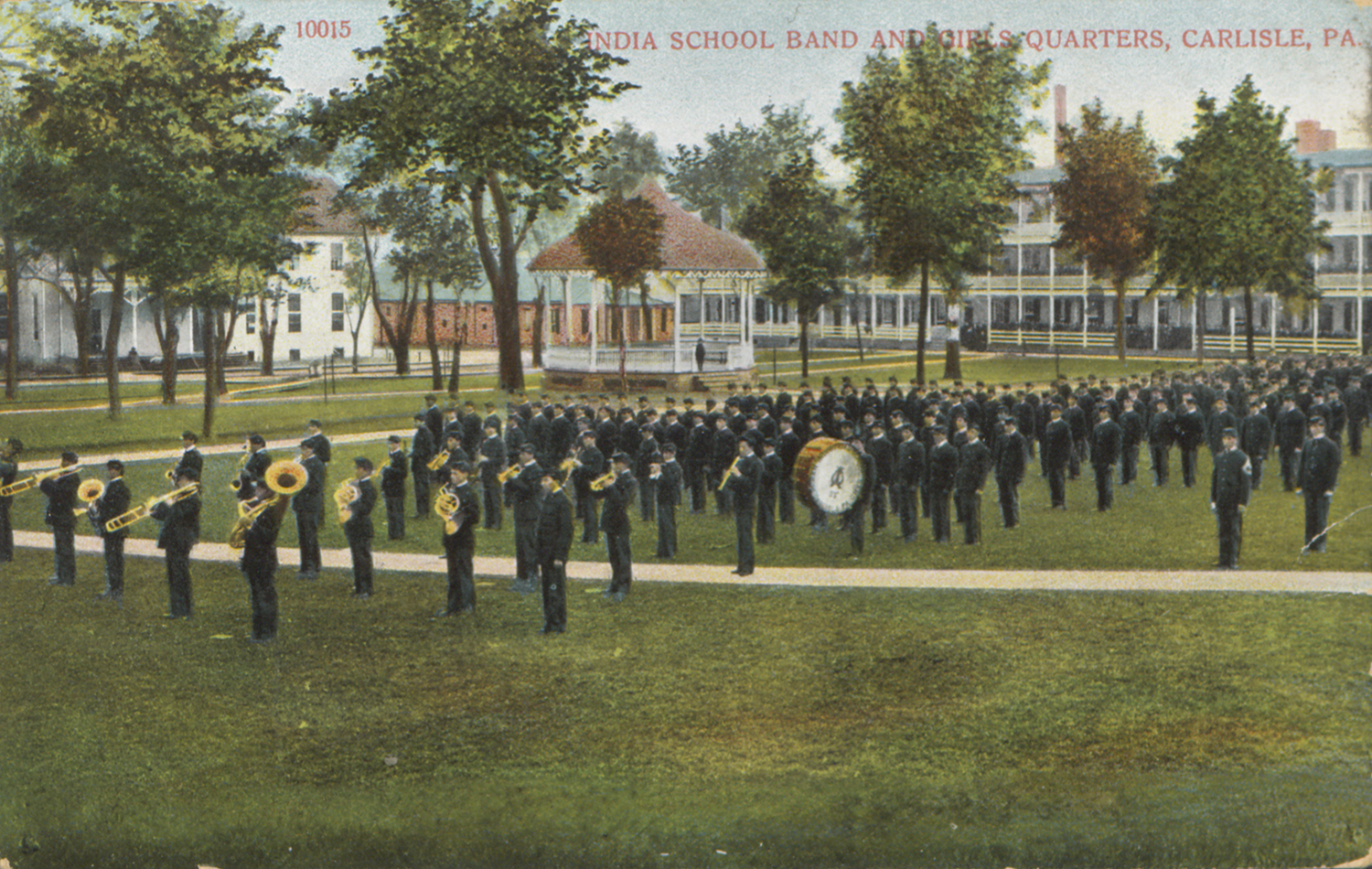 (Source: National Archives and Records Admin., via Dickinson College Collection)
|
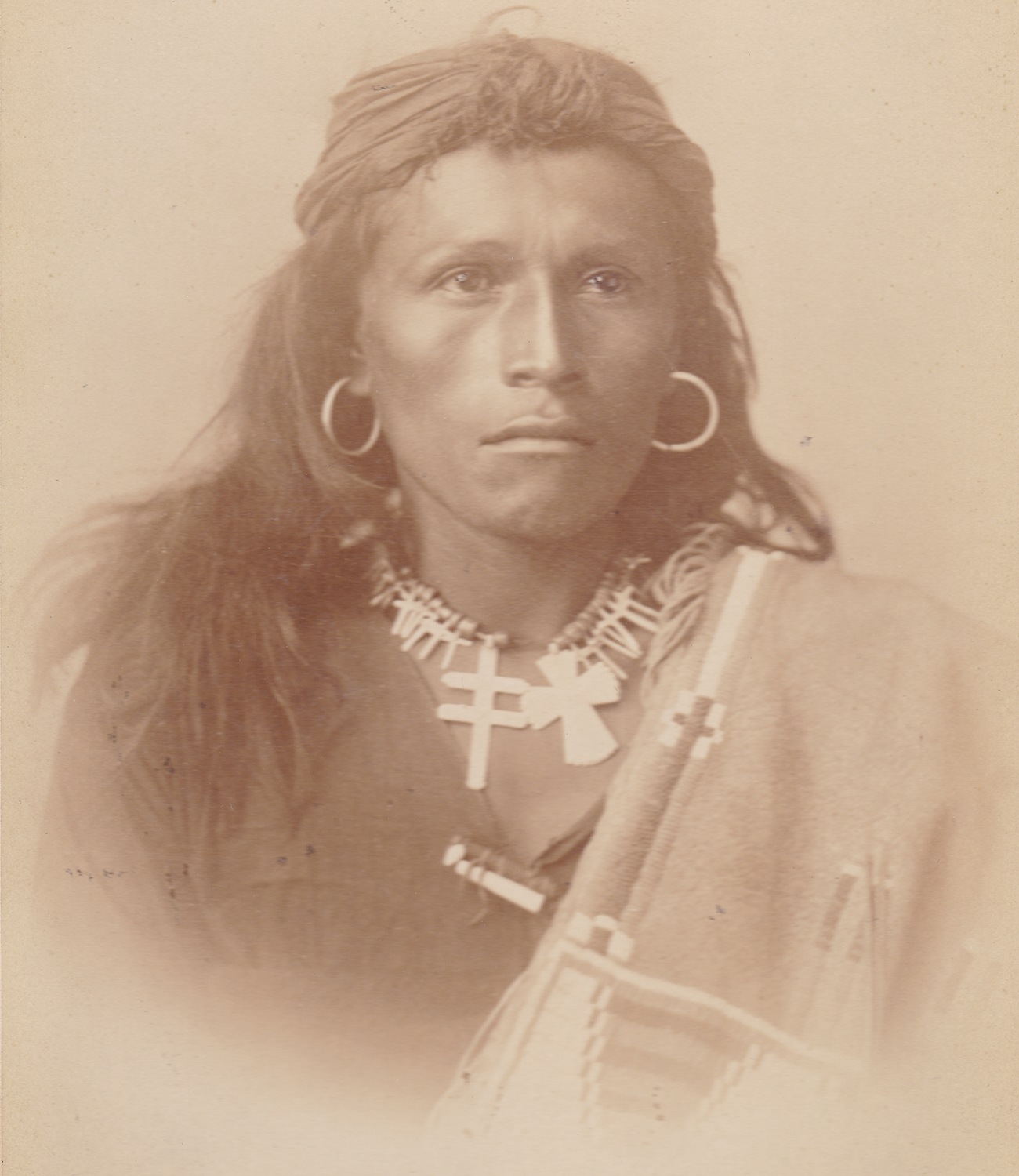 |
| Photo 3: Tom Torlino, Navajo student at Carlisle, in 1885. |
Photo 4: Furniture Building Shop, 1901. |
 |
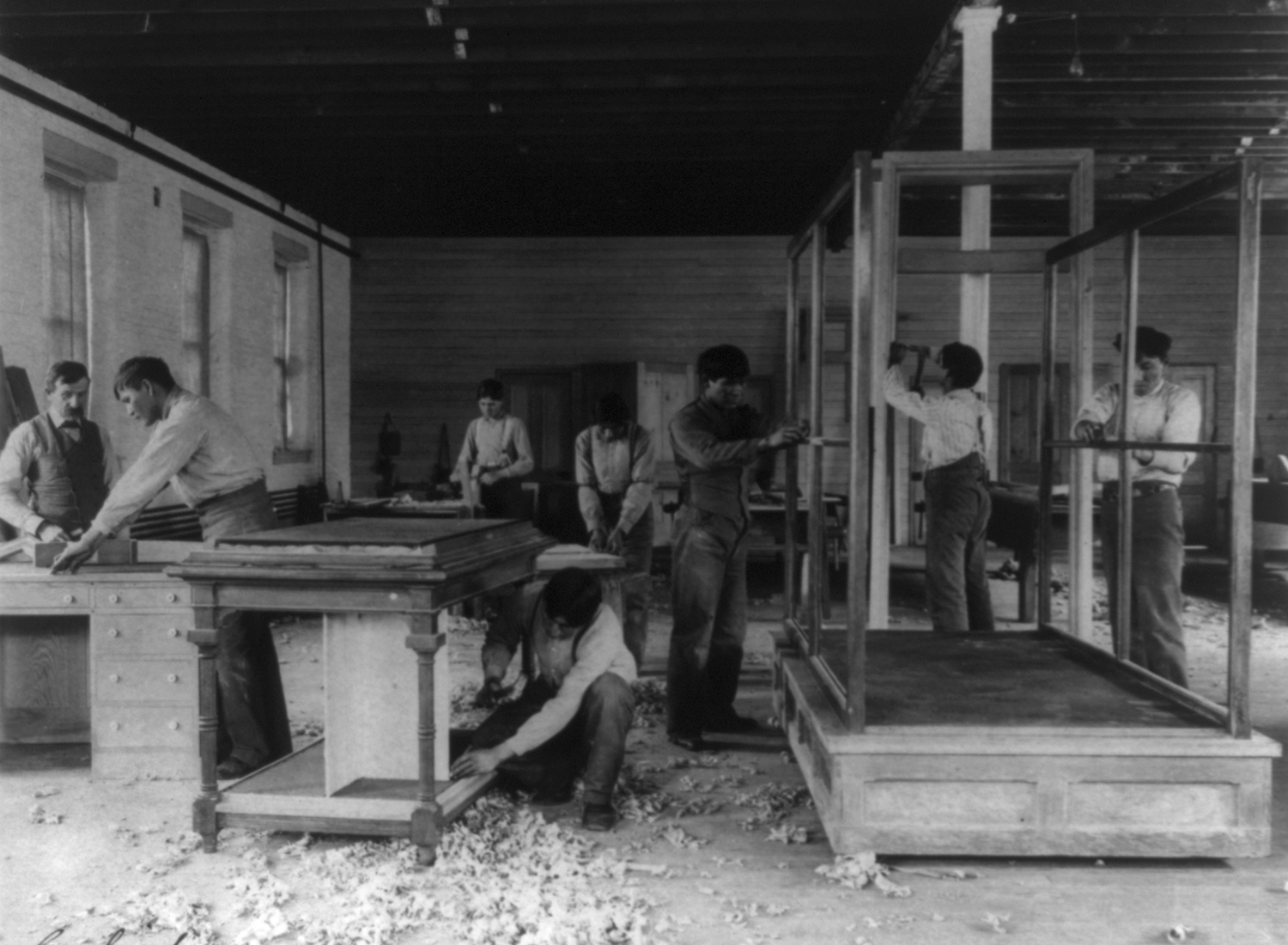 |
| Photo 5: Home Economics class, 1901. | |
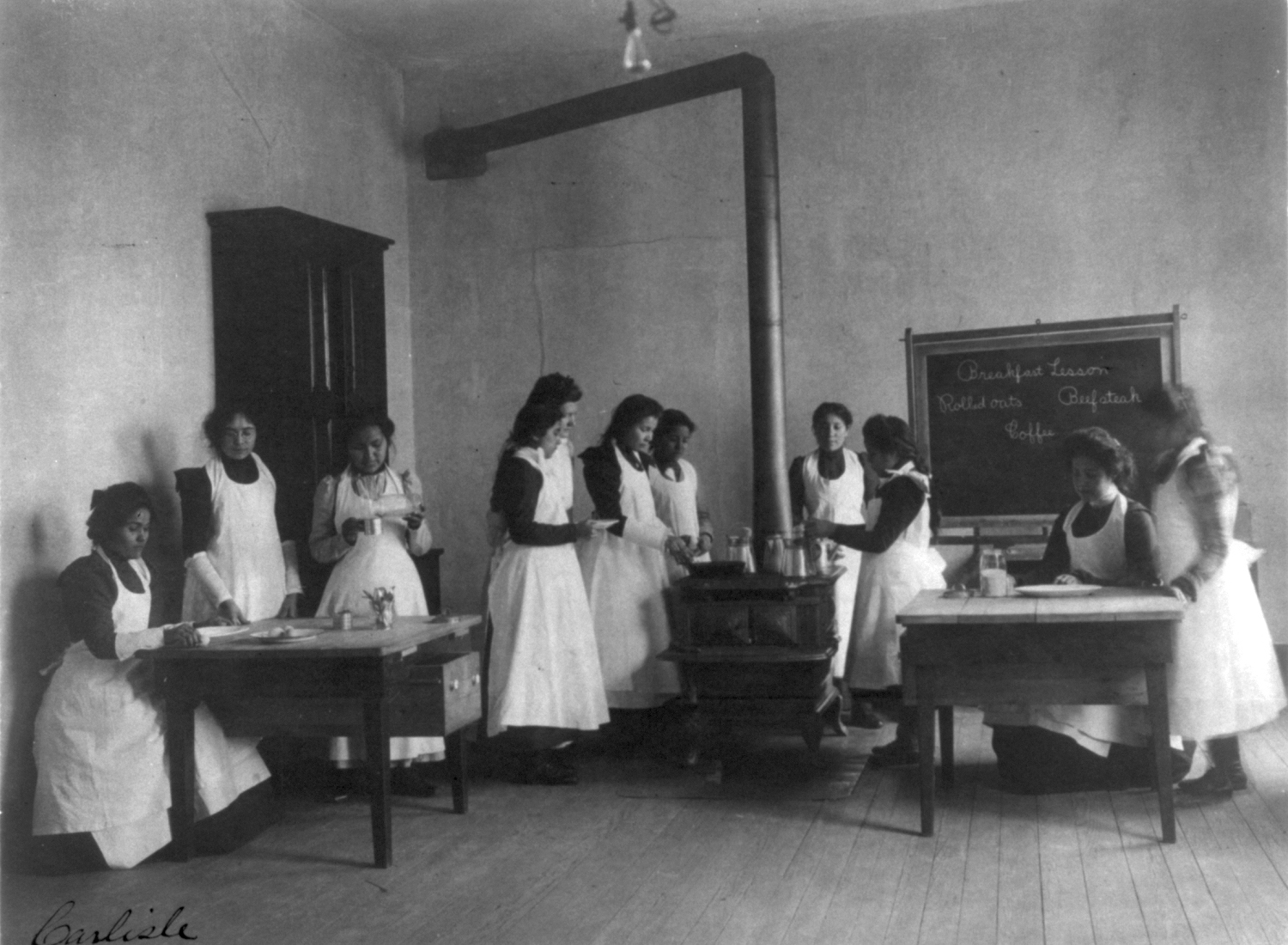 |
- Activity 1: Controlling Culture, Controlling History: The Power in Telling History
- Activity 2: Historic American Indian Boarding Schools Beyond Carlisle
- Activity 3: Explore Disease at Carlisle with Science and Empathy
- Activity 4: Preserving American Indian Past, Present, and Future
- Activity 5: Making Global Connections at Carlisle
This lesson is based on the National Register of Historic Places nomination file for the “Carlisle Indian Industrial School” (with photos) and resources from the Library of Congress, U.S. Army War College Library, Dickinson College Archives & Special Collections, and National Archives and Records Administration. The lesson was written by Maria Lee, Historical Anthropologist, and Katie Orr, Historian and Education Coordinator at NPS Cultural Resources Office of Interpretation & Education. Published in September 2016, with editing assistance from scholars and teachers, as well as federal preservationists, it is one in a series that brings the important stories of historic places into classrooms across the country.
Last updated: February 10, 2017
